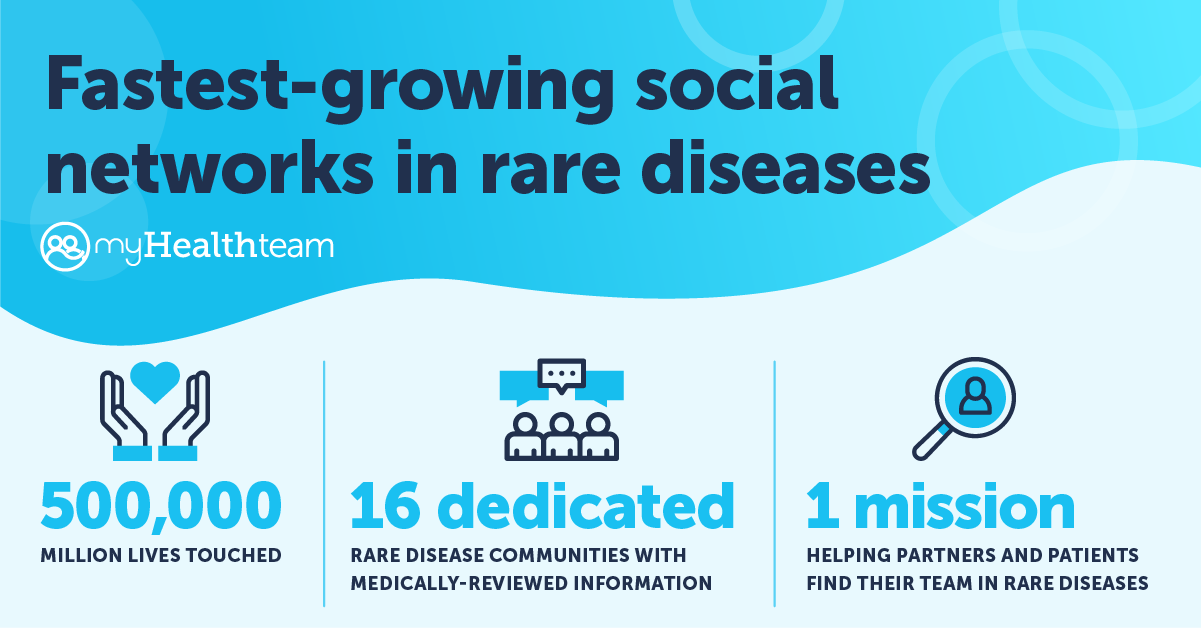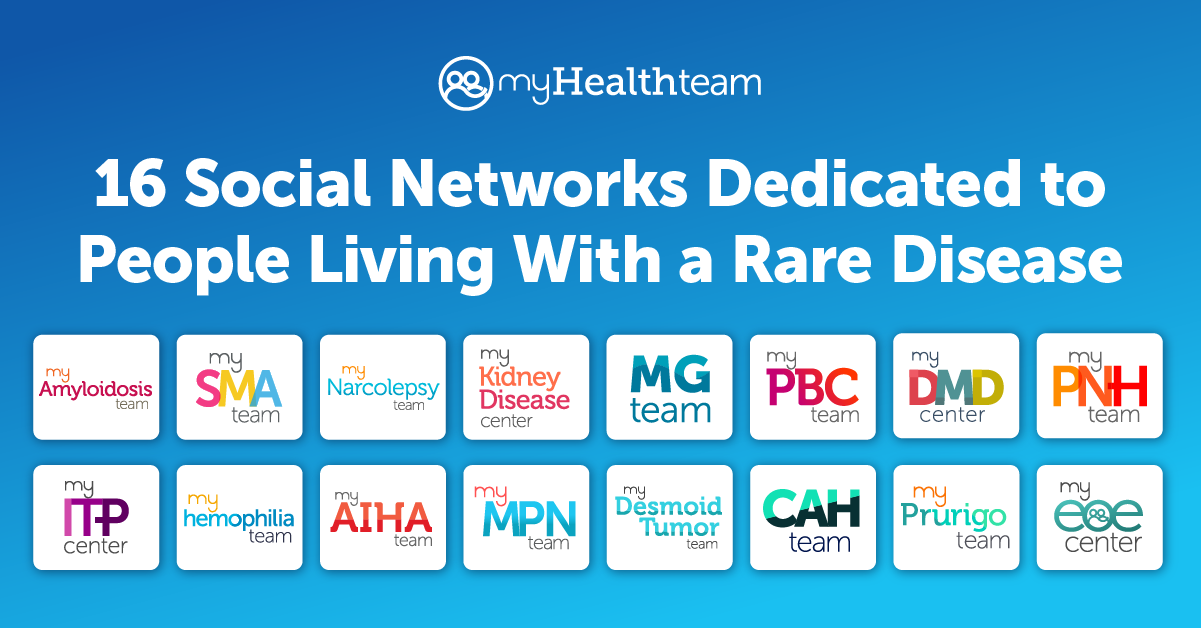The Rare Disease Marketing Guide: 5 Strategies Every Pharma Marketer Needs To Know for Patient Engagement
By Eric Peacock, Co-founder and CEO, MyHealthTeam
R&D in rare diseases has skyrocketed. Thirty percent of today’s R&D pipeline is in rare diseases, and 40 percent of overall pipeline growth since 2013 is due to rare diseases. As the leading creator of patient communities — with 16 focused on rare conditions — we know a few things about these niche patient communities. This year, two of MyHealthTeam’s rare disease research posters are being featured at the 2024 NORD Breakthrough Summit: “Empowering Primary Biliary Cholangitis Patients With Peer Support and Education” and “Patient Reported Impact of Pulmonary Arterial Hypertension and Desired Treatment Outcomes.”
Gaining patients’ trust and feedback is a strength of ours, which fuels the creation of our patient communities. Our research is one piece of the marketing puzzle, and below are five more strategies to help pharma connect with patients. Please read on and contact me to explore how we can help you find and connect with patients.

To date, MyHealthTeam has launched 16 rare disease social networks, partnering with pharma companies and biotech manufacturers to bridge the gap for patients. Patients with rare diseases are typically isolated — there may be no one else facing the same condition within a 100-mile radius and many live far away from the centers of excellence for their disease. Our goal is to make it easy for patients to find the people, trusted medical information, and support they need to best manage their condition. We also want to make it easy for them to engage with pharma partners in research, clinical trials, advertising, and patient support. Here are five key lessons we’ve learned along the way.

1. The Demand for Rare Disease Social Networks Is High Among Patients
Historically, patients with rare diseases found themselves geographically isolated from other patients and disconnected from vital information, specialists who understand their diseases, and any kind of clinical trials available to them. It can feel extremely lonely, frustrating, and scary. Patient social networks like MyHemophiliaTeam, mySMAteam, or MyNarcolepsyTeam can instantly bring together thousands of rare disease patients to share tips and experience. They can participate in a live, virtual Q&A session with one of the nation’s top researchers or clinicians in their disease (often there are fewer than a dozen) or learn about the three or four clinical trials going on near them. They can read medically approved articles and watch videos about their condition that are a safe alternative to “Dr. Google.”
Technology, expert medical writers, and AI break down the traditional barriers preventing rare disease communities from learning and from engaging with pharma manufacturers. It’s not a “field of dreams” where “if you build it, they will come.” You have to build it, reach out to let them know about it, and then keep delivering value by helping them see around the next corner in their journey with the disease.
2. Rare Disease Patient Communities Are Marketing Channels for Drug Launches — And Here’s Why!
Pharma marketers in rare disease partner with MyHealthTeam to launch a condition-specific patient community long before their drug goes to market. By doing so, our partners engage patients in trial recruitment, generate evidence for regulators, and begin disease state education. By the time launch comes around, MyHealthTeam already has a built-in community diagnosed with that rare disease and ready to learn about the new therapy.
In fact, a recent ad campaign within one of our rare disease partners over-indexed and exceeded client expectations: Audience quality was 10 to 40 times higher than the advertiser’s benchmark, proving that MyHealthTeam reaches real patients diagnosed within these niche conditions. Additionally, the click-through rate was three to four times higher, and the cost to reach a diagnosed patient within their condition category was two to four times lower than the client’s benchmark.
Programmatic advertising and mass market advertising typically don’t perform terribly well in rare disease. Advertising directly to a community of patients diagnosed with the disease works very well.
3. Rare Disease Patient Populations Are Educated and Motivated
Common among rare disease communities is a highly educated and motivated patient population. Many patients consider themselves “self-taught Ph.D.s” in their condition, obtaining information from academic journals, peer-to-peer interactions, and podcasts. There is a high ability to engage them and get their input on patient outcomes and burden of disease — or to educate them about new treatments like biologics and gene therapies. Bring the message to them directly and help them understand how to get involved in trials and get insurance companies to pay for cutting-edge new therapies. There are a lot of hurdles in their way at launch, and you can help knock those down with information.

4. Patient Input Can Impact Clinical Trial Design: A MyHemophiliaTeam Case Study
An early inspiration for us came from one of our first rare disease social networks, MyHemophiliaTeam. Research conducted with our members actually influenced the design of our pharma partner’s clinical trial. Up until that point, our client had mainly based their decisions about which outcomes to measure in the trial on KOL input and a panel of five patients with hemophilia. We launched MyHemophiliaTeam and, after a few months, we were able to engage 50 members in a quantitative survey that identified a totally new and important clinical outcome: pain. This hadn’t been considered in the trial design.
Older hemophilia patients, who had never benefited from prophylactic treatment of their hemophilia at a young age, had suffered debilitating joint damage in their knees and shoulders that even made it hard for them to sleep at night. This collaborative research surfaced an entirely new endpoint to consider in the trial, showcasing the potential for early partnership in the drug development process.
5. Trendsetting Collaborations Get the Best Results
We encourage a collaborative approach with pharma partners for best results. From evidence generation in trials to disease state education and ultimately to B2C market launches, the rare disease social network serves as a platform for engaging and cocreating with the patient community. For brands that are about two to three years shy of a consumer product launch, now is the time to consider partnering with an existing rare disease social network or partnering with us to launch a new social network. And for brands launching into a competitive field, or introducing a new therapy for the first time to a rare disease, differentiate by going direct to patients. This will help give voice and education to the community while helping you build authentic relationships with the very patients you’ll soon be serving.
MyHealthTeam is not only illuminating the unseen struggles of patients but also reshaping the landscape for pharma partners. Together, we are forging a path where knowledge, support, and groundbreaking advancements intersect to redefine the future of rare disease education and care.
